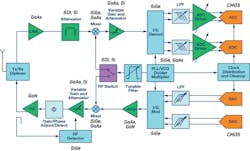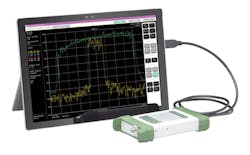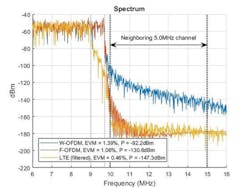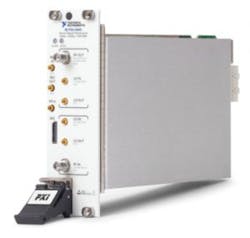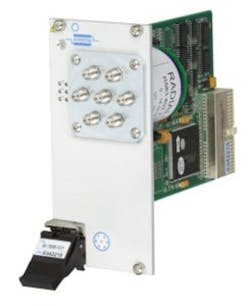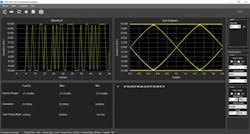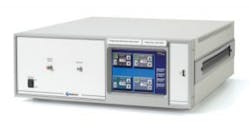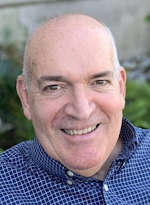This year, Hawaii is hosting the IEEE MTT-S International Microwave Symposium (IMS), a key annual international meeting for microwave technologists. Co-located with IMS are the IEEE RFIC and ARFTG conferences, which organizers call, respectively, the premier IEEE conference on RFIC technology and the conference for detailed technical discussions of RF test-and-measurement challenges. In addition, event organizers are emphasizing the “5G Wave,” and the IEEE Microwave Theory and Techniques Society (MTT-S) in partnership with the IEEE Communications Society (ComSoc) are collaborating on a special 5G Summit.
In addition to the technical paper presentations and workshops, the symposium also includes a commercial exhibition. Attendees represent plenty of “who’s who” companies—and those attending shared some of the topics and opportunities on which they are focusing. Several seem to agree that 5G is a wellspring of developments and important topics—though they also shared some other “top of mind” RF and microwave topics.
For example, as a company focusing on the testing needs of the wireless industry, AR RF/Microwave Instrumentation believes there is a strong need to clarify testing standards for 5G and related wireless technologies. “The standards should be targeted to both wireless service and equipment providers and test laboratories; test equipment makers then can better address those needs with cost-effective solutions,” noted Rob Rowe, engineering manager.
DPD and 802.11ax
“5G will certainly be an important topic at IMS 2017, with emphasis both in the <6-GHz band and the millimeter wave (mmWave) bands,” said David Hall, principal marketing manager, RF and wireless at National Instruments. In addition to 5G, other important topics for the RF and wireless industry include new techniques for digital predistortion (DPD), the rollout of IEEE 802.11ax, the proliferation of automotive radar, and new radio standards for the Internet of Things (IoT), he said.
The increased bandwidths required to handle the volume of data expected on the 5G networks also is a percolating topic. “Evaluating the data channel from backhaul antennas to optical networking cables to PC backplanes will require test solutions to characterize all these segments,” noted Stanley Oda, Anritsu product manager.
Of course, the move to 5G and the test and measurement needs associated with it are important to both Boonton and Noisecom, noted John Ghabra, product manager at parent company Wireless Telecom Group. “We expect radar and electronic warfare to continue to be important as the technology there continues to evolve and techniques become more sophisticated,” said Ghabra.
Meanwhile, at Pickering Interfaces, where the focus is on switching, the key topic of interest is signal integrity, noted Bob Stasonis, sales and marketing director. “The switching system must not inhibit instrumentation access to the 5G signal—our products should not be the weakest portion of the signal path,” he added. “That is why we partnered with Radiall, one of the leading manufacturers of microwave switching,” he explained.
The world beyond 5G is of particular interest to Analog Devices and Mathworks. “At Analog Devices, we see a constantly changing world, with evolving lifestyle and regulatory requirements providing unprecedented opportunity for the RF, microwave, and mmWave market,” said Declan Browne, RF and microwave product marketing director. He said mega-trends such as the insatiable need for broadband connectivity and the emergence of wireless sensing are driving demand.
Meanwhile, Ken Karnofsky, senior strategist for signal processing applications, MathWorks, said some other RF/microwave topics of importance at IMS 2017 and for the remainder of the year include multifunction phased array systems, wireless connectivity for IoT, radar and V2X communication for autonomous vehicles, and spectrum sharing and interference management.
Several companies shared previews of what they plan to highlight at the show.
Analog Devices
According to Browne, Analog Devices will present a balance of demonstrations across all vertical market segments highlighting the unique full signal chain high-performance capabilities of the Analog Devices 1,000+ RF and microwave product portfolio at a technology, discrete signal chain, chipset, and fully integrated solution level (Figure 1).
Courtesy of Analog Devices
At Analog Devices, explained Browne, the signal-chain solution-centric approach is providing customers with a breadth of products across GaN, SiGe, SOI, low-geometry CMOS, BiCMOS, GaAs, and system-level packaging solutions. “With Analog Devices, the engagement moves from a component-level discussion to a system-level discussion,” said Browne.
Anritsu
Anritsu has a complete lineup of high-frequency broadband VNAs and BERT/sampling oscilloscopes to characterize and debug the signal integrity of these data channel components, noted Oda. “We will be showing our VectorStar MS4647B four-port differential system with newly introduced Universal Fixture Extraction (UFX) software for de-embedding user-customized test fixtures for accurate DUT characterization,” he said.
“We will also display the VectorStar ME7838A broadband system that can conduct sweeps from 70 kHz to 110 GHz in an on-wafer environment,” he continued. “On the same probe setup will be our new 110-GHz Spectrum Master MS2760A ultraportable spectrum analyzer [Figure 2] directly connected to an on-wafer probe.”
Courtesy of Anritsu
Accurate measurements with wideband frequency coverage are key to developing good circuit models for chip design. “Anritsu’s lineup of VectorStar VNAs have the broadest single sweep frequency coverage on the market,” Oda said, “enabling more precise device characterization.”
Finally, production requirements for testing E-band components are ramping up with 5G implementation. “The ShockLine MS46522B E-band VNA brings a new level of integration and convenience to E-band testing at a lower cost than traditional broadband solutions,” Oda said. “With integrated tethered measure modules, the MS46522B E-band VNA offers a unique solution for E-band component testing.”
AR RF/Microwave Instrumentation
AR will present several products from its AR RF/Microwave Instrumentation, AR Modular RF, and SunAR RF Motion businesses, said Rowe. “These products range from amplifiers, hybrid RF power modules, and RF safety meters to accessories such as antennas and directional couplers,” he said.
AR added the SunAR division, formerly Sunol Sciences, earlier this year. The division’s product line includes precision positioners for EMC testing, antenna measurements, and OTA testing; antennas for EMC testing and distributed antenna systems; robotic test platforms; and reverberation systems and stirrers for EMC, shielding effectiveness, and OTA testing.
“Many new wireless technologies are dependent on the capability to utilize noncontinuous frequency bands,” noted Rowe. “AR provides very broadband power amplifiers that allow engineers to efficiently test the technology with a single amplifier, simplifying setup and saving considerable time. The amplifiers are linear and can be used for many protocols. In addition, complete integrated solutions can be designed per customer requests.”
Some of the features of the product line, according to the Rowe, include amplifier Class A operation with available Class AB for some models, a complete suite of accessories for testing/research needs, and service and support.
Keysight Technologies
According to a company spokesperson, Keysight Technologies will showcase its latest design, simulation, and characterization test solutions for wireless communications (5G, IoT, and WLAN) and aerospace/defense (radar, EW, and satellite). Visitors can meet Keysight’s application experts and evaluate a range of solutions in various form factors from benchtop to modular to handheld.
Keysight also will be involved in various exhibitor keynotes, workshops, short courses, and technical programs including the 5G Summit as well as Microwave Application Seminars (MicroApps), RF Boot Camp, and student competitions.
MathWorks
According to Karnofsky, MathWorks will exhibit a number of recently introduced capabilities:
- New 5G Library in LTE System Toolbox: explore, design, and simulate 5G New Radio waveforms and physical layer algorithms;
- Phased Array System Toolbox and RF Blockset: hybrid beamforming simulation and design and synthesis of massive MIMO antenna arrays;
- Communications System Toolbox: WINNER II channel model for simulation of MU-MIMO systems;
- Antenna Toolbox: Rapid design of low-cost (integrated) printed antennas used in IoT/M2M applications;
- RF Toolbox and RF Blockset: RF budget analysis, simulation, and verification of homodyne and superheterodyne RF transmitters and receivers; and
- HDL Coder: HDL code generation and targeting of Zynq-based software-defined radio hardware.
In the race to 5G, system engineers and architects must focus on accelerating innovation and minimizing the valuable engineering time spent on programming, debugging, or building hardware realizations of their design ideas, noted Karnofsky, such as evaluating 5G candidate waveforms (Figure 3).
Copyright 1984-2017 MathWorks, used with permission
National Instruments
NI’s Hall said his company will be demonstrating a wide range of test and measurement solutions for 802.11ax, LTE-Advanced Pro, and 5G. One of the newest demonstrations features NI’s second-generation Vector Signal Transceiver (VST) in conjunction with specialized software for generation and analysis of 5G waveforms (Figure 4). The demonstration features representative waveforms of the Verizon 5G and New Radio physical layers—and engineers can use this test setup for characterization of 5G RFICs such as RF power amplifiers and front-end modules. In addition, NI will be featuring mmWave 5G measurements as well by demonstrating a channel-sounding system for the 72- to 74-GHz signals.
Courtesy of National Instruments
“One of the biggest challenges facing our industry is the relationship between growing product complexity and escalating cost of test,” according to Hall. For example, in the wireless industry, the advent of 4G and 5G technology presents an additive test challenge as the 2G and 3G test requirements remain, he explained. “Today, our customers from characterization and production test must solve the challenges associated with more test cases in concert with reducing test cost and time to market,” said Hall. As a result, today’s engineers are more readily using software to automate measurements, even in R&D.
One of the unique aspects of NI’s PXI product offering (such as the PXIe-5840 Signal Transceiver) is the use of software as a mechanism to accelerate measurements and provide engineers with the ultimate measurement flexibility. For example, many of NI’s instruments such as the second-generation VST feature a LabVIEW-programmable FPGA that engineers can customize to solve unique measurement challenges.
Pickering Interfaces
“With almost 400 choices in RF and microwave switching, we will be showing samples of our products in the most popular frequency ranges,” said Stasonis. “We will be showing RF and microwave solutions in both the PXI form factor and Ethernet-based LXI,” he added.
“One key area that we address is the capability to shorten the signal path in certain applications,” said Stasonis. “For example, the 40-785B microwave multiplexers (Figure 5) have a remote option where you can position the switching closer to the unit under test and control the switching via a cable to their PXI module.”
Courtesy of Pickering Interfaces
He added, “This may sound trivial, but the fact that many of our microwave switching systems feature LED Status indicators allows the test engineer to visually know the status of the signal switching.”
Rigol
According to Chris Armstrong, director of product marketing at Rigol, there are two applications encompassing IoT and RF garnering growing interest. First, there is design and debug of ASK- and FSK-based modulation protocols. “These are common for emerging IoT security and home automation applications and include protocols like Z-Wave,” said Armstrong. Second, there is fast growing interest in EMI precompliance testing due to time to market and development cost pressures in these industries.
Armstrong said Rigol will be demonstrating RF products and solutions focusing on the DSA800 Series spectrum analyzers and DSG800 Series signal generators. Rigol also will be demonstrating its application solutions for EMI and ASK/FSK demodulation as well as a new EMI bundle, which includes the company’s S1210 EMI precompliance software, near-field probes, EMI-DSA800 detector, and EMI RBW option for the DSA800s for $999, he said. The ASK/FSK solution, he added, includes the DSA832E-TG and S1220 software (Figure 6).
Courtesy of Rigol
“Affordable and reliable modulation debugging makes prototyping products more efficient,” noted Armstrong. Integrating new protocols, especially in the dynamic security, home automation, and IoT markets has long been a challenge for design engineers as the implementation guidelines for emerging protocols aren’t always clear when the engineer needs them.
“Our most recent update to the DSA800 Series spectrum analyzers is to include the preamplifier standard on new 3.2- and 7.5-GHz instruments,” said Armstrong. “This enables engineers to improve the signal-to-noise ratio when looking for EMI issues or analyzing transmitted signals. Rigol’s new S1220 software utilizes the capabilities of the 3.2- and 7.5-GHz DSA800 Series spectrum analyzer in a new way to enable demodulation and decoding ASK and FSK signals in real time.”
Wireless Telecom
Across its product line, Wireless Telecom Group is particularly focusing on two areas, according to Ghabra. First, the Noisecom UFX7000A broadband noise generator (Figure 7), he said, has a powerful architecture used to create complex custom, precision noise signals with high output power and superior flatness required for testing today’s wireless communication systems.
Courtesy of Wireless Telecom Group
The second area is addressed by instruments including the Boonton RTP5000 and RTP4000 real-time power sensors. Built with Boonton’s trademarked Real-Time Power Processing technology, these sensors deliver 100,000 measurements per second with no gaps in signal acquisition, zero measurement latency, and no missed data, he said. Able to capture signals from 4 kHz to 40 GHz with fast rise times and wide dynamic range, the RTP5000 and RTP4000 sensors are suitable for capturing today’s most challenging radar, electronic warfare, LTE, and Wi-Fi signals, noted Ghabra.
Such instruments, concluded Ghabra, are addressing the needs of engineers who are constantly facing challenging requirements to lower test cost and shorten test time.
For more information

